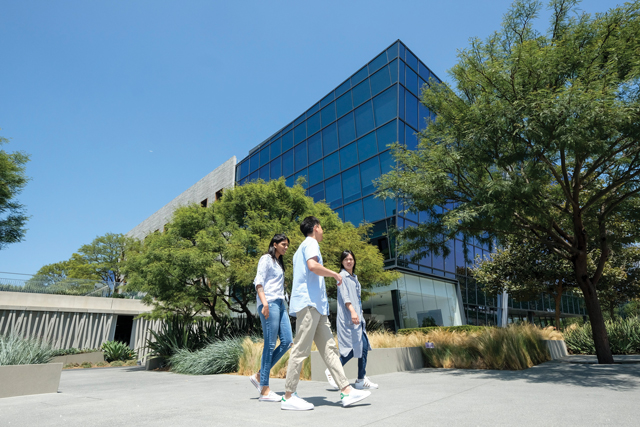
It’s getting hot in Silicon Beach.
The Westside cluster of neighborhoods — encompassing West L.A., Santa Monica, Venice, Marina del Rey, Playa Vista and Culver City — that comprise Silicon Beach have seen a growing number of workers in the technology sector and rising demand for office space.
“There’s really strong business activity throughout the Westside, and a lot of that is concentrated throughout the coast,” said Blake Searles, a managing director at Jones Lang LaSalle Inc.
Searles said capital is “flowing into” startups in L.A., which has boosted demand for coworking space. Many coworking companies have signed large leases on the Westside, including a recent lease signed by WeWork Cos. Inc. for 116,000 square feet in Santa Monica.
The rise of flexible office options “has given younger companies the opportunity to grow in nimble and flexible ways,” Searles said.
Office vacancy rates were down last quarter in nearly every Silicon Beach submarket. The average vacancy rate was 9.6%, a decline from 10.5% in 2018 and 12.5% 10 years ago, according to data from NAI Capital Inc.
The asking rate for the quarter rose to $4.84 per square foot, up 3 cents over the previous year and up $1.65 from 10 years prior. Playa Vista’s $5.59-per-square-foot average asking rate was a standout — particularly in an area that used to be considered an “economic alternative to Santa Monica,” according to Michael Arnold, an executive vice president at NAI Capital.
New construction has been increasing rapidly across the Westside, with top technology and media companies signing leases in recent years as their presence in L.A. grows.
The FAANG companies — Facebook Inc., Apple Inc., Amazon.com Inc., Netflix Inc. and Google, which is an Alphabet Inc. subsidiary — have all inked major L.A. leases recently. And locally grown Snap Inc. recently moved into a new massive headquarters near the Santa Monica Airport.
Filling the pool
Relative to other big cities, L.A.’s pool of talent in the tech sector is small. The Los Angeles metropolitan area counted just 139,774 workers in the tech sector last year — far below the Bay Area’s 353,760, according to a report from CBRE Group Inc.
But analysts say L.A.’s tech talent pool is growing rapidly. Between 2013 and 2018, the number of workers in the tech sector rose 16.4%; the number of workers in nontech occupations rose 2.9% over the same period. Among U.S. and Canadian cities, L.A. was one of the 10 fastest-growing tech job markets, according to CBRE.
Los Angeles universities also produce a great deal of tech talent, with 41,453 technology degrees awarded between 2012 and 2017; Bay Area universities awarded 33,809 during the same period, according to CBRE research.
“Our expectation is that L.A. will continue to move up the ranks in years to come, particularly because of the large amount of tech degree graduates being produced in the region,” said CBRE Director of Research and Analysis Colin Yasukochi.
Right now, he said, there are more tech degrees in Los Angeles than there are jobs. But the gap is narrowing, he said.
And much of the tech sector’s growth in L.A. is coming from companies based in the larger Bay Area and Seattle markets, such as the FAANGs.
“Oftentimes L.A. is a very attractive alternative for its supply pipeline and lower cost” over markets like the Bay Area, Yasukochi said.
Brokers said Silicon Beach’s office market is on a hot streak, but it’s likely to level out as new construction comes online.
“We’re going to see some consistency with where we are now,” Arnold said.
